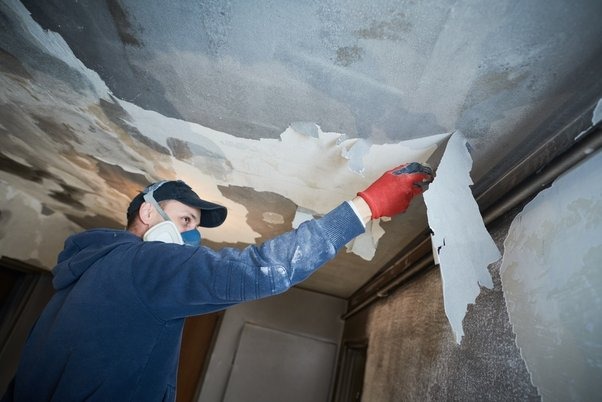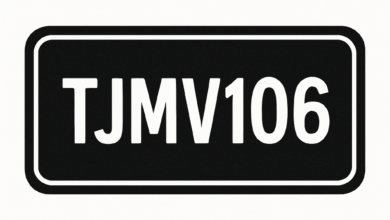The Science Behind Fire Damage Restoration: How Professionals Restore What Seems Lost

When a fire strikes, it leaves behind a trail of destruction that can be overwhelming. Beyond the visible charred walls and burnt belongings, fires can cause hidden structural damage, release toxic residues, and create persistent odors that linger long after the flames are extinguished. Fire damage restoration is the intricate process of returning a fire-damaged property to its pre-loss condition. This task requires a combination of specialized knowledge, advanced technology, and meticulous care to address the many challenges that fire damage presents.
In this article, we’ll explore the science and techniques behind fire damage restoration, shedding light on how professionals restore what seems lost.
Understanding the Types of Fire Damage: More Than Just Burnt Material
Fire damage is not a one-size-fits-all situation. The type and extent of damage depend on several factors, including the fire’s intensity, duration, and the materials involved. Professionals must assess these variables to determine the best course of action for restoration.
1.1 The Impact of Heat and Flames
- Structural Damage: The intense heat of a fire can weaken the structural integrity of a building. Even if a structure appears stable, hidden damage to beams, columns, and load-bearing walls can compromise safety. Restorers need to thoroughly inspect and reinforce these structures as part of the restoration process.
- Material Degradation: Different materials respond to heat in various ways. For instance, metals may warp, plastics can melt, and wood may char or ignite. Each material requires a specific approach for restoration or replacement.
1.2 The Aftermath of Smoke and Soot
- Smoke Residue: Smoke is a complex mixture of gases and particulate matter produced by the incomplete combustion of materials. It can penetrate deeply into walls, floors, and fabrics, leaving behind odors and stains that are difficult to remove.
- Soot: Soot is the fine black or brown powder composed of carbon particles created by incomplete combustion. It can coat surfaces throughout the property, causing discoloration, corrosion, and potential health risks if not properly cleaned.
1.3 Water and Chemical Damage
- Water Damage from Firefighting: In addition to fire damage, properties often suffer water damage from the efforts to extinguish the flames. Water can seep into walls, floors, and furniture, leading to mold growth and further structural weakening.
- Chemical Residues: Fire extinguishers and firefighting chemicals can leave residues that need to be carefully removed to prevent corrosion or other damage to surfaces and materials.
The Restoration Process: Step-by-Step Recovery
Fire damage restoration involves a multi-step process that begins with assessment and mitigation and ends with the complete restoration of the property. Each step is crucial in ensuring that all aspects of the damage are addressed.
2.1 Initial Assessment and Safety Measures
- Damage Evaluation: The first step in the restoration process is a thorough assessment of the damage. Professional fire damage restoration services inspect the property to determine the extent of fire, smoke, soot, and water damage. This assessment informs the restoration plan, ensuring that all necessary repairs are identified and prioritized.
- Safety Precautions: Safety is paramount. Restorers must ensure that the building is safe to enter and work in, which may involve shoring up weakened structures, shutting off utilities, and wearing protective gear to avoid exposure to hazardous materials.
2.2 Mitigation and Containment
- Preventing Further Damage: Mitigation involves taking immediate steps to prevent further damage to the property. This might include boarding up windows, covering damaged roofs, and removing standing water to prevent mold growth.
- Containment of Affected Areas: To prevent smoke and soot from spreading to unaffected parts of the building, restorers often set up containment barriers. This helps isolate the damage and protect clean areas from contamination.
2.3 Soot and Smoke Cleanup
- Soot Removal Techniques: Removing soot is a delicate process that requires specialized cleaning methods. Depending on the type of soot and the surfaces affected, professionals may use dry cleaning sponges, chemical cleaners, or thermal fogging to lift soot from walls, ceilings, and other surfaces.
- Neutralizing Odors: Smoke odors can be deeply embedded in porous materials like fabrics and wood. Restorers use advanced deodorization techniques such as ozone treatment, hydroxyl generators, and thermal fogging to neutralize these odors at a molecular level.
2.4 Structural Repairs and Restoration
- Rebuilding Damaged Structures: Once the property is cleaned and stabilized, the focus shifts to repairing and rebuilding. This may involve replacing damaged drywall, framing, flooring, and other structural elements to restore the integrity of the building.
- Restoring Aesthetics: In addition to structural repairs, the aesthetic restoration of the property is crucial. This includes repainting walls, refinishing floors, and restoring any architectural details that were damaged by the fire.
The Role of Technology in Fire Damage Restoration
Modern fire damage restoration relies heavily on advanced technology to ensure thorough and efficient recovery. These tools and techniques help restorers achieve better results in less time.
3.1 Thermal Imaging for Hidden Damage
- Detecting Heat Signatures: Thermal imaging cameras allow restorers to detect hidden hot spots that could reignite or cause further damage. These cameras can also identify areas where fire may have spread undetected, such as inside walls or under floors.
- Identifying Water Damage: Thermal imaging is also useful for identifying areas of water damage that are not visible to the naked eye. This helps ensure that all moisture is addressed before mold can develop.
3.2 Air Scrubbers and Filtration Systems
- Cleaning the Air: Air scrubbers and filtration systems are used during the restoration process to remove airborne contaminants, including smoke particles, soot, and chemical residues. These systems help improve indoor air quality and make the environment safer for both workers and residents.
- HEPA Filtration: High-Efficiency Particulate Air (HEPA) filters are particularly effective at capturing fine particles, making them essential in the cleanup of fire-damaged properties.
3.3 Digital Documentation and 3D Scanning
- Documenting the Damage: Digital documentation, including photos and 3D scans, helps restorers create detailed records of the damage. These records are not only useful for the restoration process but also for insurance claims and future reference.
- Precision in Reconstruction: 3D scanning technology allows restorers to create accurate blueprints of the damaged property, which can be used to guide the reconstruction process. This ensures that repairs are precise and that the restored property matches its original layout and design.
Final Steps: Ensuring Long-Term Safety and Prevention
Once the fire damage restoration process is complete, it’s important to take steps to ensure the long-term safety of the property and reduce the risk of future fires.
4.1 Installing Fire-Resistant Materials
- Upgrading Building Materials: Rebuilding after a fire provides an opportunity to upgrade to fire-resistant materials. Options include fire-rated drywall, flame-retardant insulation, and non-combustible roofing materials, which can help protect the property from future fire damage.
- Retrofitting for Safety: Consider retrofitting the property with additional safety features, such as fire-resistant windows, doors, and vents. These upgrades can provide an extra layer of protection against fire.
4.2 Fire Prevention Measures
- Installing Smoke Detectors: Ensure that smoke detectors are installed in key areas throughout the property and that they are regularly tested and maintained. Smoke detectors are a critical first line of defense in alerting occupants to a fire.
- Creating an Emergency Plan: Develop a comprehensive fire emergency plan that includes evacuation routes, emergency contact information, and a designated meeting place. Make sure all occupants are familiar with the plan and practice it regularly.
4.3 Regular Maintenance and Inspections
- Routine Inspections: Schedule regular inspections of the property’s electrical systems, heating equipment, and other potential fire hazards. Early detection of issues can prevent fires from starting in the first place.
- Ongoing Maintenance: Maintain the property’s fire safety systems, such as sprinklers and fire extinguishers, to ensure they are always ready to function in an emergency.
Conclusion: The Path to Restoration and Renewal
Fire damage restoration is a complex and demanding process, but it’s one that can restore hope and stability after disaster strikes. By understanding the science behind restoration, from the initial assessment to the final repairs, homeowners can appreciate the meticulous care and advanced technology that go into returning their property to its pre-loss condition. While fire can cause immense devastation, the expertise of restoration professionals ensures that even in the face of destruction, renewal is possible.



